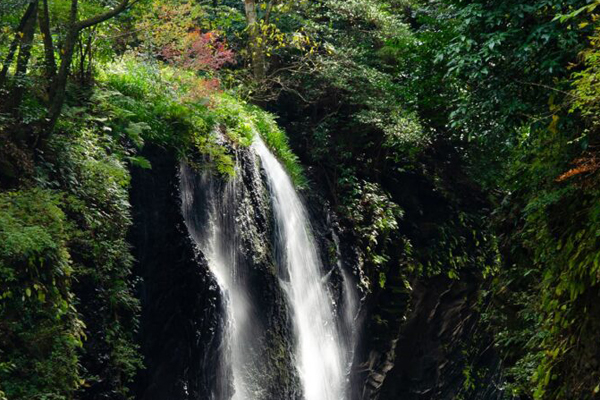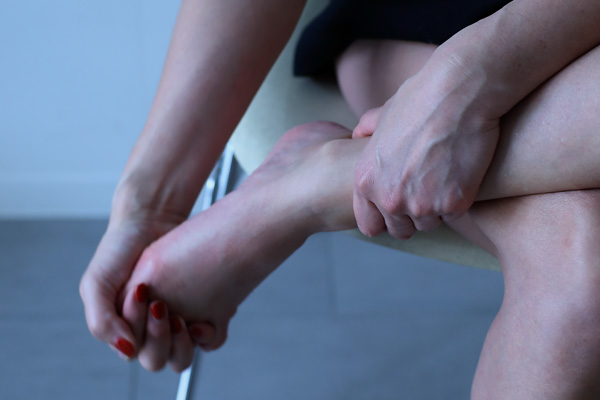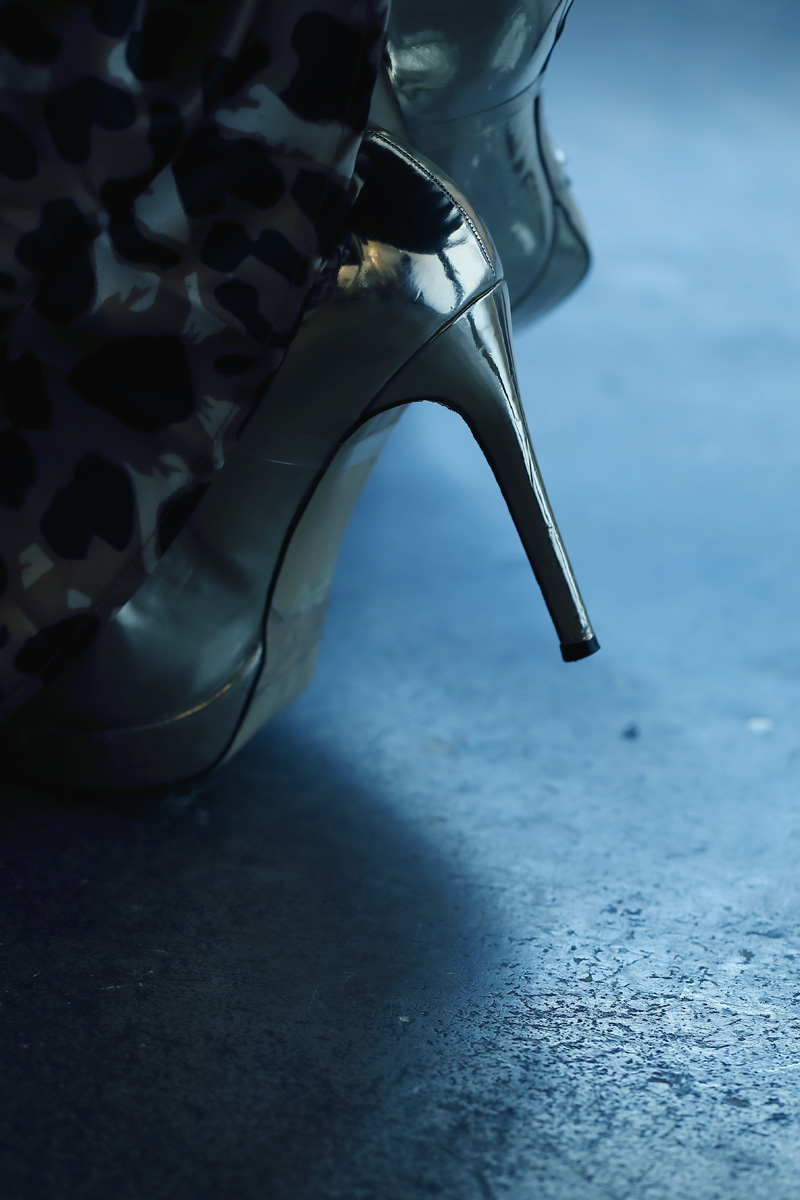
美意識の在処。
美意識の在処。
誰かの美意識が自分の美意識を高める、という話。

美意識は人それぞれ。 それは外見の美しさだけでなく、 その人の内面の美しさや趣味嗜好、 ライフスタイルといったさまざまな要素に関わってくる。 世の中にあるいろいろな美意識に触れることは 多様性の理解に繋がっていくのではないか。 そんな思いから、身近にあまりいない、でも魅力ある、 独創的な美意識を持っていそうな 2人の表現者に話を聞いた。 テーマは「美意識の在処」。この号を読んで、 自分の美意識の在処を確認するのも 面白いかも知れません。
美意識の在処。
Feature | 2025.9.24
誰かの美意識が自分の美意識を高める、という話。
美意識は人それぞれ。
それは外見の美しさだけでなく、
その人の内面の美しさや趣味嗜好、
ライフスタイルといったさまざまな要素に関わってくる。
世の中にあるいろいろな美意識に触れることは
多様性の理解に繋がっていくのではないか。
そんな思いから、身近にあまりいない、でも魅力ある、
独創的な美意識を持っていそうな
2人の表現者に話を聞いた。
テーマは「美意識の在処」。この号を読んで、
自分の美意識の在処を確認するのも
面白いかも知れません。
On how other people’s aesthetic sensibilities can enhance our own.
Each person’s sense of beauty is unique.
It’s not just about physical appearance,
but also about a person’s inner beauty,
tastes, and lifestyle.
I believe that exploring the diverse aesthetics thatexist in the world can lead to a deeper understanding of diversity itself.
With this in mind,
I spoke with two unique and fascinating creators—
people you don’t encounter every day—
who seem to possess a distinctive sense of beauty.
The theme of our conversation was
“The Source of Aesthetic Sensibility”
Reading this issue might be a great way for you to discover the whereabouts of your own sense of beauty.
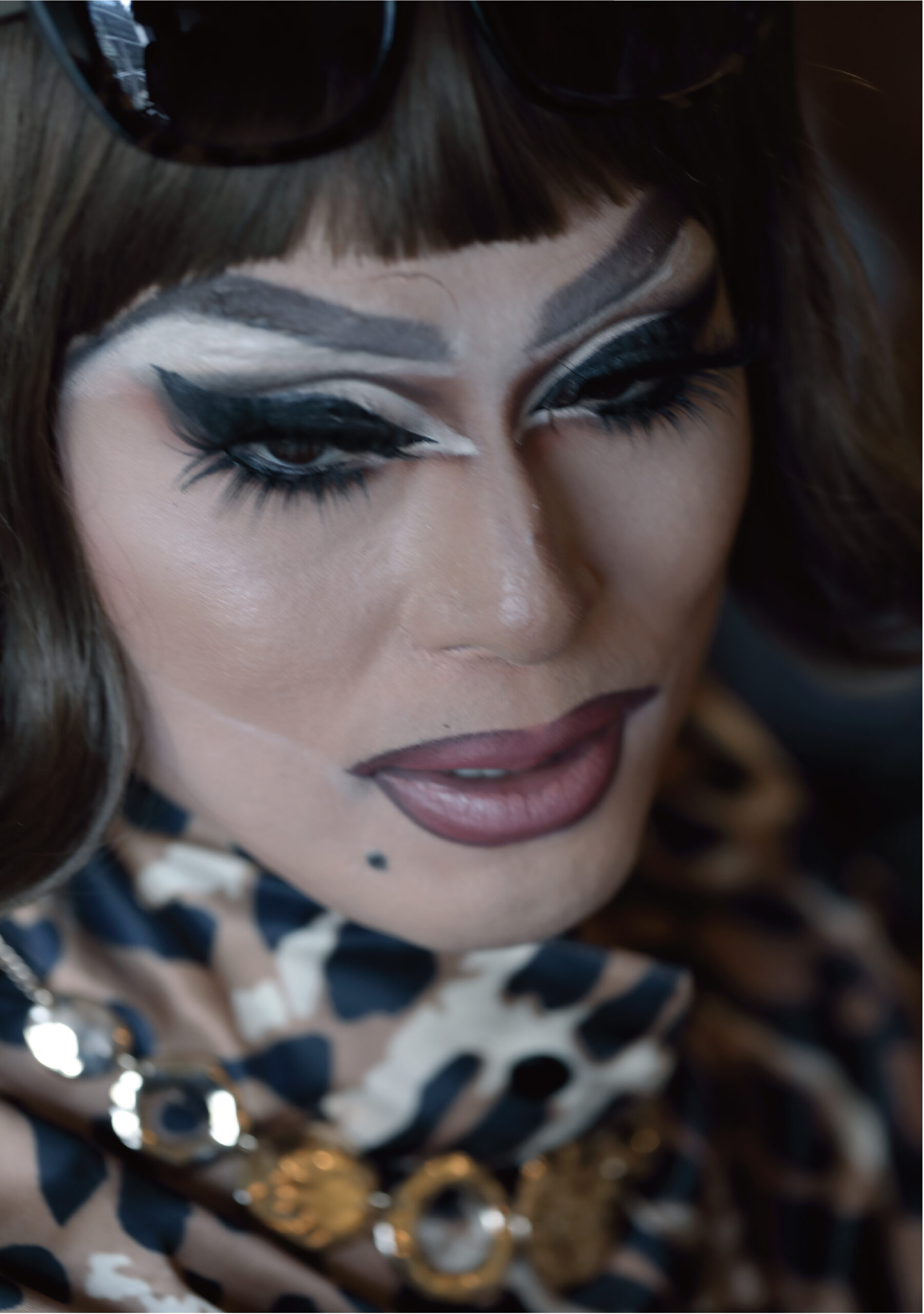

“美”の解釈はまさに十人十色、基準もルールもない。
そこにあるのは、それぞれの美意識。
辞書によると “美意識” とは、美しいと感じたり、
美しいものを創造する心の働きとある。
それは人それぞれ異なり、時代や文化によっても変化する。
自分が持ちあわせていない美の感覚や感性がある人を見ると、
その美はどこから生まれるのか知りたくなり、
知れば自分の美意識がアップデートされる。
それぞれの美意識の在処を知る、すると人生はちょっと豊かになる。
Interpretations of “beauty” are truly diverse, with no set standards or rules,
and we each have our own aesthetic sensibility.
The dictionary defines “aesthetic sensibility” as the mental process of perceiving beauty and creating beautiful things.
It differs from person to person, and changes with time and culture.
When we encounter someone who possesses a sense of beauty or sensitivity that we lack,
we tend to be curious about where that beauty originates,
and once we know, our own aesthetic sensibility is updated.
Discovering the source of aesthetic sensibility makes life a little richer.
ある人は雨に濡れた街の風景が美しいといい、またある人はビルの谷間に沸きたつ入道雲に見惚れるという。ヨーロッパの教会にあるフレスコ画に息を呑む人がいれば、石畳の露地裏に差し込む夕陽に胸を打たれる人がいる。あるデザイナーは「余白にこそ美がある」といい、ある写真家は「美は混沌に宿る」という。日本では風情と感じられる秋の虫の声が、他の国ではただのノイズになる。「美しい」という感情ほど、人によって解釈が異なるものはない。
現代ではSNSが当たり前に使われるようになり、世界中のさまざまな美がスクロールされる。そこにあらわれる多様性に楽しさや自由を思う人がいる一方、好きな情報だけがアルゴリズムにより機械的に選択され、その情報カスケードのなかに心地よさを求める人がいる。そうして、理解できない美を遮断する。結果、偏狭な美意識に生きることになる。
自分は何を美しいと思うのだろう。どうしてそれを美しいと思うのだろう。美意識の在処を追っかけていくと、そこにはさまざまな要因がある。子どもの頃の記憶、いつか観た映画の1シーン、誰かのさりげない一言、好きな曲のワンフレーズ。発見や驚きや感動といったものとの出会いが、自分の美意識を育てていく。では、あの人の美意識はどこにある?
そんな思いから個性あふれる2人の美意識の在処を探ってみたいと思った。ひとりはドラァグクイーンのドリアン・ロロブリジーダさん、もうひとりはダンサーや俳優などマルチに活躍するアオイヤマダさん。独創性にあふれる2人の表現者はそれぞれ、どんな美意識のもとでパフォーマンスをしているのか。
美意識とは日々の暮らしをつくり、生き方の基軸となる。美的センスだけでなく、その人の信条となるもの。世の中には多様な美意識があり、その多様性が世界を豊かな美しさで彩ってくれることを、2人のお話を聞いて実感した。
Some people find beauty in a rain-soaked city street, while others are mesmerized by thunderheads rising between skyscrapers. Some are captivated by the frescoes in a European church, while others are moved by the sight of a sunset hitting a cobblestone alley. A designer might say, “Beauty lies in the blank space,” while a photographer believes, “Beauty resides in chaos.” The sound of autumn insects, considered poetic in Japan, can be mere noise in other countries. No other feeling is interpreted as differently from person to person as the feeling of “beautiful.”Today, with social media, we scroll through a vast array of global aesthetics. While some feel a sense of joy and freedom from this diversity, others prefer to find comfort in an algorithm-driven cascade of information, where they only see what they already like. They block out forms of beauty they don’t understand, which can lead to a narrow-minded sense of aesthetics.
What do I find beautiful? And why? If you trace the whereabouts of your own sense of beauty, you’ll discover a variety of influences: childhood memories, a scene from a movie, a casual remark from someone, a single phrase from a favorite song. Encounters with discovery, surprise, and inspiration are what cultivate your personal aesthetic. So then, where does another person’s the source of aesthetic sensibility? This question led me to explore the unique aesthetics of two highly individual creators. The first is drag queen Durian Lollobrigida, and the second is Aoi Yamada, a multi-talented artist who works as a dancer and actor. What kind of aesthetic principles guide the performances of these two original and expressive artists?A sense of beauty shapes our daily lives and forms the foundation of how we live. It’s not merely about taste, but about a person’s core beliefs. Listening to these two artists, I truly felt that the world is filled with diverse aesthetics, and it is this very diversity that colors our world with rich beauty.
ドラァグクイーンという生き方。
Feature | 2025.9.24
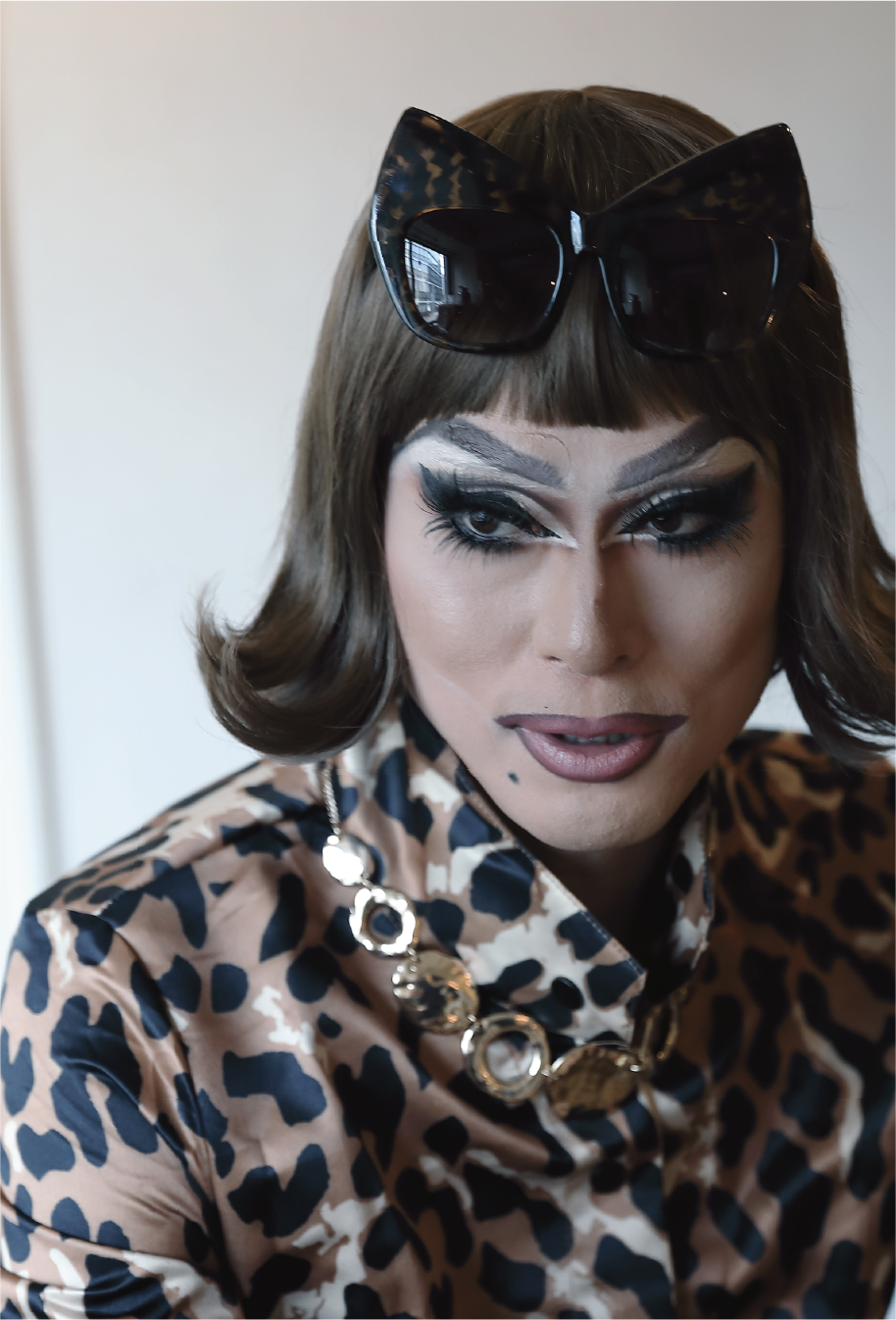
様々なジャンルで活躍する
ドリアン・ロロブリジーダ。
その独創的な美意識に、多くの人が魅せられる。
《ドラァグクイーン》
ドリアン・ロロブリジーダ Durian Lollobrigida
東京都出身。まだ学生だった2006年12月にドラァグクイーンデビューし、
新宿二丁目発のディーヴァユニット「八方不美人」、「ふたりのビッグショー」メンバーとして活動。
数々のイベントでのMCや、アーティストのコンサート、PV、ファッションショーなどに出演し、
映画『エゴイスト』『ストレンジ』にも出演。
奇抜な衣装に派手なメイク、盛ったヘアスタイルで圧倒的な存在感を放つドラァグクイーン。なかでも今、YouTubeをはじめドラマやエッセイ、さらに歌手として人気なのがドリアン・ロロブリジーダさんだ。そんなドリアンさんに、まずはドラァグクイーンとは、をお聞きした。「ドラァグクイーンとはパフォーマーであり表現様式です。原型は1900年頃からあり、花開いたのは1980年代以降の、欧米のアンダーグラウンドシーンでした」。
ゲイシーンやディスコシーンから火が付いたドラァグクイーン、その名前の由来は?「ドラッグクイーンと表記されることが多くありますが、ドラッグは薬物のDRUGで、私たちはドラァグ(DRAG)、“引きずる”という意味です。これは男性が女性用の大きなドレスを、裾をずるずる引きずって着たことから付いた呼び名という説があります。クイーンは女王という意味ですが、英語圏などではトランスジェンダーをからかってクイーンと呼ぶこともあるそうです。自分たちに投げかけられた侮蔑の言葉を逆手にとって『でも、私たちはクイーンなのよ、女王なのよ』と、矜持をもって肩書きとして付けた。粋な心意気でしょ」。
多くの人が混同するのがドラァグクイーンとLGBTQだ。「ドラァグクイーンとLGBTQは全くの別物ではありませんが、ただLGBTQという言葉自体は性的指向やジェンダーアイデンティティを指しています。どういった性別の人に魅力を感じるかや、自分がどういう性別と感じているかといったことです。一方でドラァグクイーンはある意味で、生業であり、肩書きなので、LGBTQという言葉とは区別をしていただきたいです」。しかし実際は、ドラァグクイーンにはゲイが多くいる。「男性のゲイだけでなく、女性のドラァグクイーンも多くいらっしゃいますし、いわゆるストレート男性のドラァグクイーンもいらっしゃいます」。
性別や性的指向に関係なく、誰でもなれるということ。では、何をすればドラァグクイーンなのか。「私の好きな『ジェイミー』というミュージカル映画に『ドラァグクイーンの唯一のルールは、ルールなんてないことだ』というセリフがあります。ドラァグクイーンという存在自体が社会が押し付けてくる“男とは、あるいは女とはこうあるべきだ”といった有形無形の圧力を高らかに笑い飛ばして、自分が好きな格好をすること。そこが私たちにとって大切なポイントです」。
YouTubeなどでドラァグクイーンたちが口パクでステージに立っているのをよく見かける。「それは『リップシンク』といって、私たちの主な芸当のひとつです。ただし、世間でいう単なる口パクではなく、そこにはもっと深いものがあります。名曲を歌う古今東西のディーヴァと同化して、その曲のブレスの位置や息づかい、ビブラートの出し方を完全に自分のなかに取り込んで、さらに歌い手が曲に込めたメッセージや情熱を体現する。リップシンクは実に奥が深いのです」。
ドリアンさんが初めてドラァグクイーンを知ったのは高校3年生の頃だったという。「近所に、仲良くしてもらっていたゲイのお姉さんグループがいて、その中にドラァグクイーンをやっていた方がいたんです。年末にパーティールームを借り切ってカラオケ大会をしたのですが、そのとき、その方がバーン!とフルメイクで登場しました。それはもう格好良くってビックリしました。雷に打たれたような衝撃を受けて、そこでドラァグクイーンになることを決めました」。
それから約20年、ドリアンさんはドラァグクイーンで生きている。「ドラァグクイーンになった当初は、化粧をして衣装を着て人前に出るだけで楽しかったけど、それはすぐに飽きてしまった。やっぱり一番は、自分のパフォーマンスをお届けして、それに感動してくれる方がいらっしゃること。見せること、ではなく “魅せること”にロマンや魅力を感じ、こんな楽しいことは他にないと思っています」。いまでは映画やドラマに出演し、ラジオのパーソナリティも務め、歌手として舞台に立ち、もちろんリップシンクもこなす。“魅せる”ドリアンさんはますます活躍の場を広げている。
The lifestyle of a drag queen.
Durian Lollobrigida is active in various genres,
and many are captivated by her unique aesthetic sensibility.
With her bold makeup, flamboyant costumes, and elaborate hairstyles, a drag queen commands an overwhelming presence. One of the most popular today is Durian Lollobrigida, a multi-talented artist who has gained a following through her work on YouTube, in dramas, and as a singer. Durian explains that a drag queen is a performer and a form of expression that originated around 1900 and flourished in the underground scenes of the US and Europe from the 1980s onward.The name “drag queen” often causes confusion. Durian clarifies that it is not “drug” (as in the substance) but “drag,” meaning to trail or pull. The name likely came from men dragging the hems of large women’s dresses. The “queen” part was a derogatory term used to mock transgender people, but it was defiantly reclaimed as a title of pride.
Durian stresses that drag is distinct from LGBTQ identity. While the term LGBTQ refers to a person’s sexual orientation or gender identity, being a drag queen is a profession or a title. She notes that while many drag queens are gay, the community includes gay women and heterosexual men as well, as anyone can become a drag queen. The core philosophy of drag is to “boldly laugh at the social pressure to be a certain way” and to wear whatever you love. As a line from the musical Everybody’s Talking About Jamie says, “The only rule of a drag queen is that there are no rules.”
A key part of drag performance is lip-syncing, which Durian says is a profound art form that goes far beyond simple mouth movements. It requires fully embodying a song’s passion, breathing, and vibrato to truly embody the original diva’s performance.Durian’s own journey began in high school when she saw a friend perform in full drag and was “struck by lightning.” That night, she decided to become a drag queen. After 20 years, she still loves her profession, but the initial joy of simply dressing up has been replaced by a deeper purpose. “It’s about delivering a performance that moves people,” she explains. “I find a certain romance in ‘charming’ an audience, rather than just ‘showing’ them something.” Durian continues to expand her creative work in films, dramas, and music, enchanting audiences with her multifaceted performances.
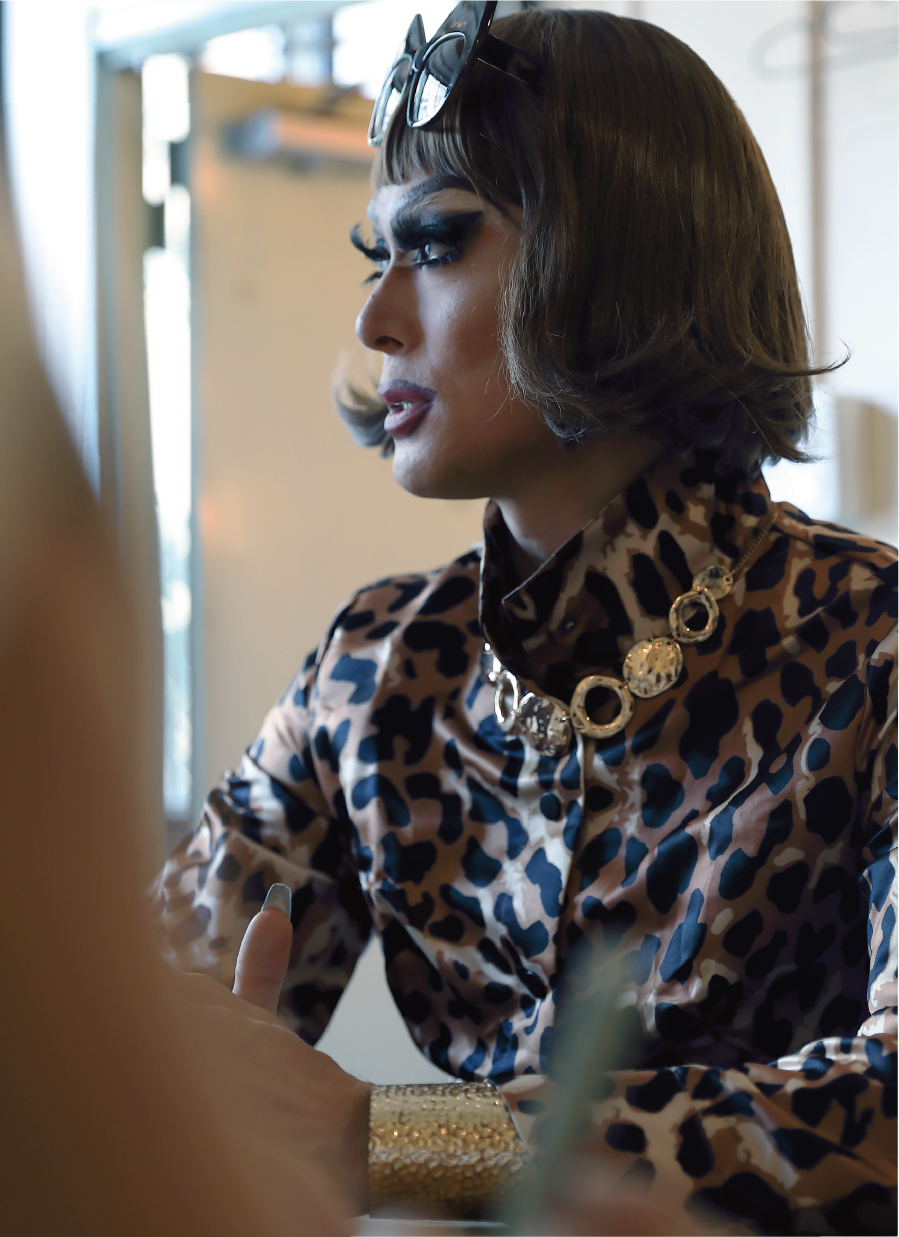



ドラァグクイーンの美学、それはマイノリティからマジョリティへの、いかしたアンチテーゼ。
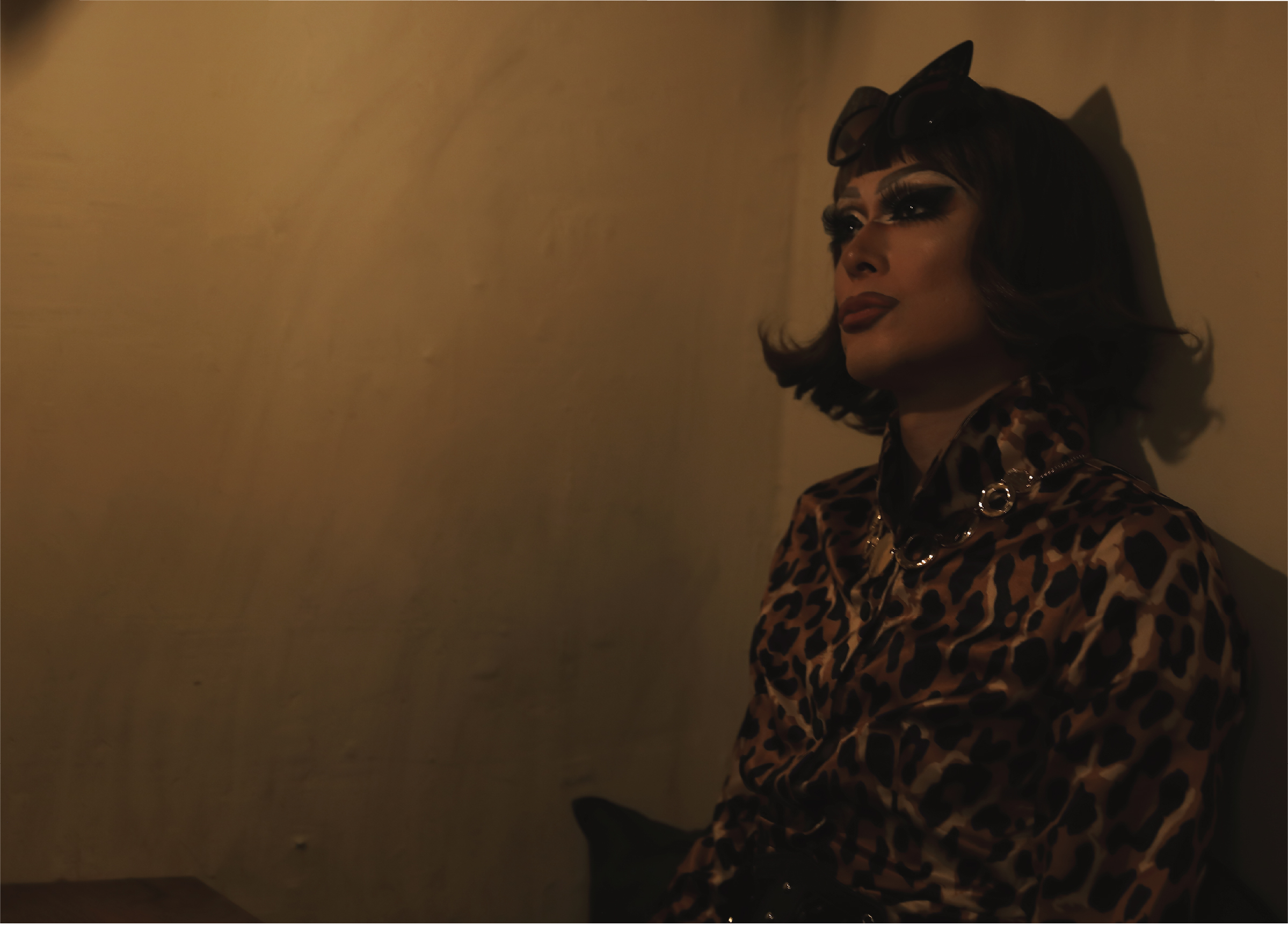
海の向こうでは以前から、ドラァグクイーンは人気者だった。1994年には、3人のドラァグクイーンが主人公のロードムービー「プリシラ」がヒット。アカデミーの衣装デザイン賞も受賞した。その1年前にはドラァグクイーンの第一人者になるル・ポールの「Supermodel」が全米ダンスチャートで2位に。ル・ポールはその後、リアリティコンペ番組「RuPaul’s Drag Race」を企画・司会。ドラァグクイーンたちがメイクやファッション、パフォーマンスを競うこの番組はエミー賞を受賞。世界各国でスピンオフが制作され、世界的な現象になった。
日本でもマツコ・デラックスやミッツ・マングローブなどが人気を集め、さらにドラァグクイーンを主人公にしたミュージカル「ジェイミー」や「キンキ―ブーツ」も上演され、YouTubeでもさまざまなドラァグクイーンたちが活躍している。そんななか、ドリアンさんが感じているドラァグクイーンが置かれている状況は?「私が始めてから20年ほどが経っていますが、その間にドラァグクイーンの立ち位置や存在意義が変わってきていると思っています。もともとはアンダーグラウンドシーンにいるマイノリティたちが社会と戦うためのひとつの表現方法だった。男は男らしくしろといわれる時代に、敢えて女性のドレスを着て、お化粧をして、マジョリティに対しての強烈な反抗だったわけです」。
そこから徐々に、活動の場がメジャーシーンへと移ってきた。「基本的にはドラァグクイーンの “らしさ” や “美学” はマジョリティへのアンチテーゼにあると思っています。ただ、時代の流れは変えられないわけで、今のようにお子さんからお年寄りまでがいらっしゃるような場所にドラァグクイーンが登場するようになる時、どんな役割を果たせば良いのかというということは常に考えています」。
ドラァグクイーンが今の社会にメッセージするべきことは、ダイバーシティの大切さだとドリアンさんはいう。「ダイバーシティ、多様性ですね。世の中にはいろいろな人がいて、いろいろな生き方がある。それを楽しんだらいいということを体現している存在がドラァグクイーンなのではないでしょうか。まだ日本ではマイノリティやLGBTQを巡るさまざまな権利などは発展途上にありますが、そこにはこんな人たちがいるんだよと、可視化する役割も担っています」。
全身を美しく飾り立てているドリアンさん、その美意識の在処はどこにあるのだろう。「私に限らず、ドラァグクイーンには様々なアートやカルチャーに造詣が深い方が多くいらっしゃる。そういった方は綺麗な日本語を使っていたり、美しいものをたくさん知っていたりする。そうして身についた美的感覚のようなものを、それぞれが体現しているのではないでしょうか」。
さらにドリアンさんは語る。「日本では、ドラァグクイーンは素顔を見せないことが美学と考えている先輩もいらっしゃいます。でも私は素顔でもメイクをした顔でもメディアに出る、両A面としてやらせてもらっています。私がお伝えしたいのは “みんなもっと好きなことをやればいい” です。私は好きでドラァグクイーンという仕事をやっている。クイーンという名を冠している以上は女王でなければいけないから気高く、威勢良く、みなさんの前に出ていく。好きから広がる世界が大切だと考えています」。
ルールに縛られず、自由を楽しむ。そこにドリアンさんの美意識の在処があるような気がした。
The aesthetics of drag: A cool antithesis to the majority from the minority.
Across the globe, drag queens have been popular for some time. In 1994, the road movie The Adventures of Priscilla, Queen of the Desert was a hit, winning an Academy Award. A year earlier, RuPaul’s song “Supermodel” topped the U.S. dance charts. RuPaul later created the reality competition show RuPaul’s Drag Race, which has since won an Emmy and become a global phenomenon with spin-offs worldwide.
In Japan, figures like Matsuko Deluxe and Mitsu Mangrove have become popular, and musicals like Jamie and Kinky Boots have been performed. Amid this growing popularity, Durian reflects on the current position of drag queens. “It’s been about 20 years since I started, and in that time, I believe the role and significance of a drag queen have changed,” she says. “Originally, it was a form of expression for minorities in the underground to fight against society. In an era when men were told to be ‘manly,’ putting on a dress and makeup was a powerful act of defiance against the majority.”
Durian notes that the drag scene has gradually moved into the mainstream. “The essence and aesthetic of drag queens are fundamentally an antithesis to the majority,” she says. “However, you can’t stop the flow of the times. When drag queens appear in places with audiences of all ages, I constantly think about what role we should play.”
Durian believes the message drag queens should convey to society today is the importance of diversity. “We are a physical embodiment of the idea that there are all kinds of people in the world and all kinds of ways to live,” she explains. In Japan, where the rights of minorities and LGBTQ people are still developing, drag queens also play a crucial role in increasing their visibility.
Durian, whose entire look is beautifully adorned, was asked where her aesthetic comes from. “It’s not just me; many drag queens have a deep knowledge of various arts and cultures,” she says. “I think we all embody a sense of beauty that we have acquired through our understanding of beautiful language and beautiful things.”
Durian adds that while some senior drag queens in Japan believe it is an aesthetic to never show one’s bare face, she takes a different approach. “I appear in the media with both my makeup-free face and my full-drag face, like a double A-side single,” she says. “My message is that everyone should do what they love more. I do drag because I love it. And since I bear the title of ‘queen,’ I must be dignified and bold when I appear before everyone. I believe that a world that expands from what you love is what’s most important.”
Durian’s “the Source of Aesthetic Sensibility” appears to be rooted in enjoying freedom and refusing to be bound by rules.
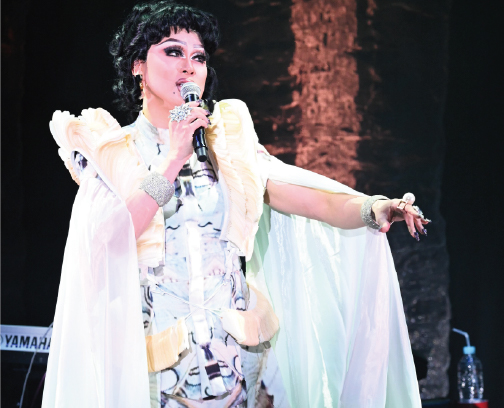
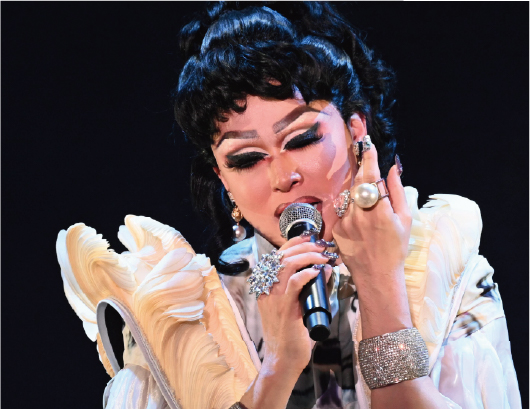
©oka rieko
表現者としての、自由と美。
Feature | 2025.9.24
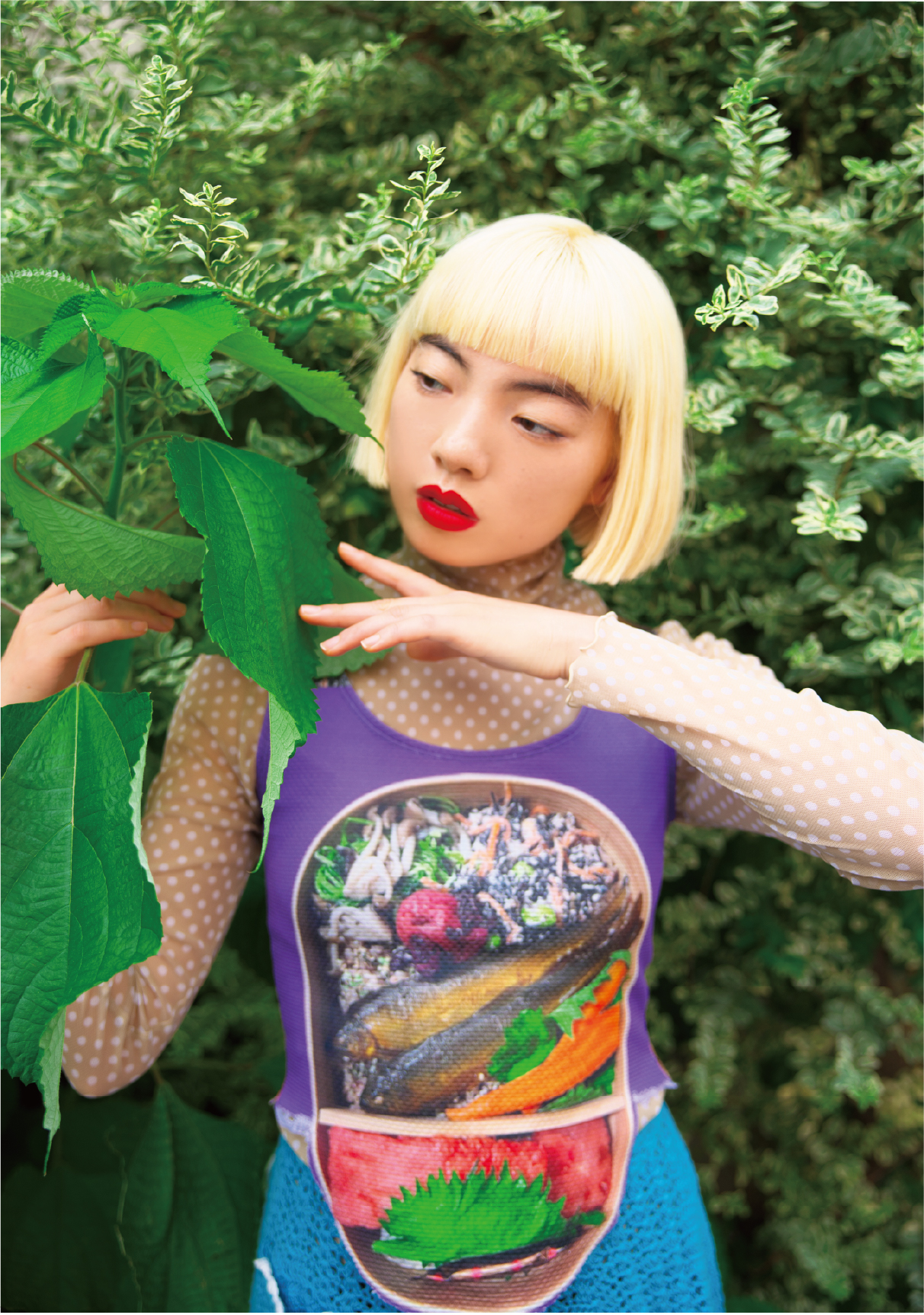
“目に見えないものづくり”をしている。
アオイヤマダはループしていく世界を表現する。
《Performing artist》
アオイヤマダ Aoi Yamada
長野県松本市出身。
90年代以前のアートシーンやアンダーグラウンドカルチャーに影響を受けたことが活動のきっかけとなる。
身体と記憶、食と人、音楽と心の繋がりを信じて現在は独自の感覚と日常からのインスピレーションを融合させ、楽曲制作、エッセイ、パフォーマンス作品に取り組む。
Instagramでは、素敵な野菜に出会ったときに展開される『野菜ダンス』や日々の夫へのお弁当作り『おべんとうのおと』を発信中。
多くの映像作品をはじめ、ダムタイプ『2020』、
東京2020閉会式ソロパフォーマンスや舞台『星の王子さま』などに出演。
Netflixドラマ『First Love初恋』、映画『Perfect Days』では役者として出演。
また、宇多田ヒカル『何色でもない花』MVでは振付を担当しACC TOKYO CREATIVITY AWARDSスタッフ賞を受賞。
NHK『ドキュメント72時間』のナレーションなどに携わるなど、身体と声で活動を広げている。
生き様パフォーマンス集団『東京QQQ(トウキョウサンキュー)』、
踊り語りユニット『アオイツキ』としても活動中。
所属するクリエイティブチーム”海老坐禅”の作品集『EBIZAZEN』が発売された。
この人の美意識の在処はどこにあるのだろう?枠にとらわれず、自由に躍るアオイヤマダさんを見てそう思った。SNSでの「野菜ダンス」や映画「パーフェクトデイズ」でのアヤ役で有名なアオイさんはダンサー、女優、モデルといった多彩な顔をもっている。どれが本当の顔?「ダンサーも俳優も違うと思っていますし、モデルはもっと遠いですね。自分の職業を言語化するのは難しいですが、本当に好きだと思えるものだけをやっているっていう感じです」。
ジャンルにこだわるという意識がアオイさんにはない。「私は毎朝、主人のお弁当をつくるのですが、そのお弁当をつくることとダンスやモデルをやることは、同じひとつの波だと思っています。例えばコース料理ではお皿が出てくる順番があって、それをパフォーマンスに落とし込んでみるときもあります。前菜からメインディッシュ、デザートへの流れのなかで、それぞれに感じたことを躍りにしてみる」。
すべてのものは波のように寄せては返し、終わりなく続く。その連なりにアオイさんらしい表現がある。「何かを感じて、何かをつくって、そのつくったものに触発されて、また何かをつくるような。そういったループされる世界に表現があると思っています」。
長野県松本市で生まれ育ったアオイさんは高校進学のために上京、ダンサーとしての活躍を始める。「ダンスやパフォーマンスが学べる高校でした。そこでいろいろなジャンルのダンスを教えてもらうのですが、どれも自分にフィットしない。仕方がないから衣装も音楽も自分でつくって、好きなように踊っていたら “面白いね” といわれるようになりました」。
その頃、アオイさんは自分がやりたい世界を見つけたという。「知り合いから山口小夜子さんや寺山修司さんを教えてもらい、私がやりたいのはこれだ!と。もともとダンスは好きでしたが一番ではなかったし、ファッションも絵も音楽も好き。そういった様々な表現手法から生まれる総合芸術のようなものが自分のやりたいことだと思いました」。
自分がやりたいことを追求する。それはそれで大きなプレッシャーがある。「2年ほど前にダンスやパフォーマンスが社会にコミットするとは、どういうことなんだろうって悩んだ時期がありました。考えるほどに深みにはまり抜け出せなくなりました。あるとき、知り合いのお医者さんに相談しました。すると『僕はマイナスのものをゼロにはできるけど、キミはゼロのものをプラスにできるじゃないか』と言ってもらえて」。
その言葉にアオイさんは、自分の中にぴかっと光るものがあったという。「そこから、じゃ、自分はなにをやっているのかと考えるようになって、ずっと考え続けているうちに “目に見えないものづくり” をやっているということに気づいたんです。そして、自分を落ち着かせることができました。やっとスタートラインに立てたって感じでしたね」。
疑問が生まれ、悩み、考え、そして答えを得る。それを繰り返しながら、どんどん自由になっていく。アオイさんの、この先の表現が楽しみだ。
Freedom and beauty as an expressive artist.
Aoi Yamada creates things that cannot be seen with the eye, expressing a world that moves in loops.
Where is the source of one’s aesthetic sensibility? I found myself asking this while watching Aoi Yamada dance freely, unconstrained by any rules. Famous for her “vegetable dance” videos on SNS and her role as Aya in the film Perfect Days, Aoi is a multi-talented artist, working as a dancer, actor, and model.”I don’t think of myself as a dancer, or an actor, and I feel even more distant from the term ‘model,'” Aoi says.
She doesn’t feel limited by genre, explaining that her work, from making a bento box for her husband to performing on a stage, is all on the same wavelength. She sees her creative process like a multi-course meal, where she expresses what she feels from each course—from the appetizer to the main dish—through her performance.
Born and raised in Matsumoto, Nagano Prefecture, Aoi moved to Tokyo for high school and began her career as a dancer. When the genres she was taught didn’t feel right, she began creating her own costumes and music, dancing as she pleased, and people started calling her unique style “interesting.” This is when she discovered her true calling: a “comprehensive art” born from various forms of expression, inspired by artists like Sayoko Yamaguchi and Shuji Terayama.
A couple of years ago, she struggled with the purpose of her art until a doctor offered a clarifying perspective: “I can take something from a negative to a zero, but you can take something from a zero to a positive.” That statement was a flash of light for her, and she realized she was creating “something invisible.” This discovery brought her a sense of calm and a feeling of finally reaching her starting line.
By questioning, struggling, and finding her own answers, Aoi continues to become freer in her expression. I am excited to see what she creates next.
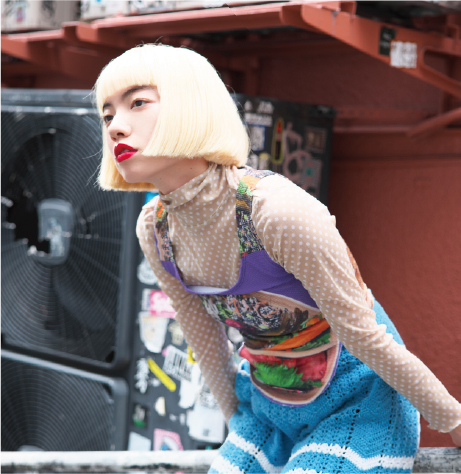
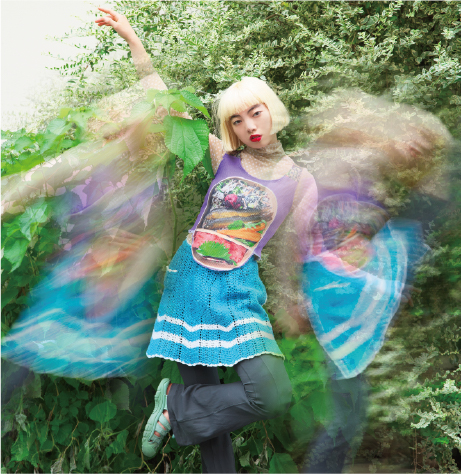
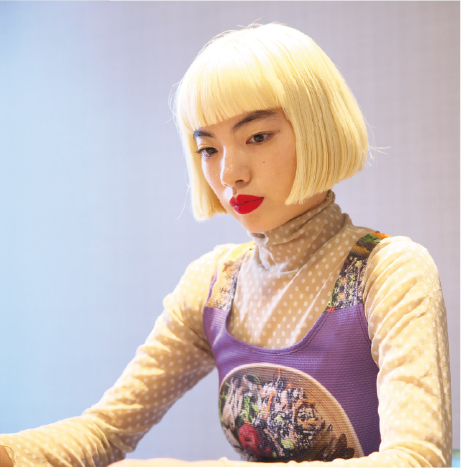
おばあちゃんの家、そこで採れる元気な野菜、美しい記憶のなかに美意識の在処がある。
今回のテーマである「美意識の在処」について、知り合いの美容師に尋ねてみたというアオイさん。「その美容師さんは『僕の美意識は姿勢にあります』というんです。意外だなと思っていたら『だって、すごい猫背の人に髪を切られるのは嫌じゃないですか』といわれ、納得しました」。
そしてアオイさんは、自分の美意識を見つめはじめる。「よく考えてみると、自分が既に持っているものを美しいと認識できないことに気づいたんです。例えば、誰かの生き方、考えや意識に美しさを感じたとき、その他人の美しさを確認し、取り入れることで自分の美意識にする。そういう具合に、常に自分の外にあるものが美しいなぁと思うんです」。
外のものを取り込み、その蓄積が美意識を形成していく。「自分のなかにある記憶ですごく美しいと思える、子どもの頃の光景を掘り起こして、そこにある魅力をパフォーマンスに表現することもあります」。
アオイさんの美しい記憶、そのひとつを語ってくれた。「おばあちゃんの家で、蚊取り線香の匂いが充満していて、おじいちゃんが高校野球を見ている。おばあちゃんがそうめんを茹でていて、庭で採れたトマトを刻んでつゆに入れて。おばあちゃんはペラッとしたワンピース一枚で、汗をにじませてそうめんをすすっている。それは自分が幼い頃に見た光景なんですが、すごく美しいんです」。
美しい記憶はいつまでも消えない。「子どもの頃の記憶を超えるものはないです。初めてなにかをする感覚だったり、何気ない幸せな瞬間だったり、それらはいくら擦っても擦っても色褪せることも、消えることもありません」。
おばあちゃんの家の記憶をセリフとして語りながらダンスパフォーマンスをしたこともあるという。
「表現するときに、その光景にある音や匂い、空気感といったものがダンスに反映されることがあります。自分としては、さっきのような記憶を辿るくらいの自然体でパフォーマンスをしていたい。そうして生まれる偶然と偶然が重なって新たな美しさが出来上がるような、そんな現象をつくることができるといいなと考えています」。
アオイさんは、「自分の内側から湧き出る感情や気持ちが信じられないと、外側にばかり目がいくのですが、そんな状態が自分にとって美しくなく、そうならないように気をつけています。先ほどの、おばあちゃんの話は、外での経験として自分のなかに入っていて、それもずっとあるから信じることができる。表現をする際の拠り所になっています」と語る。
そして話は、おばあちゃんの家の野菜へと移る。「おばあちゃんの家でにんじんの種をまいて、おばあちゃんが育ててくれて、それを掘り起こした時、なんて美しいんだろうと思いました。このにんじんのようになりたいって」。
アオイさんはおばあちゃんが育てたにんじんに美を見つける。「そのとき、自分にとっての美は野菜に近いんだと感じました。にんじんは一生懸命生きて、伸びて、宇宙のような広がりのある土の中でたくさんのエネルギーをもらって大きくなって、そこで人間に採られて食べられて、そしてまた栄養となって生きていく。にんじんって、野菜って、すごいし、美しい」。
自然のなかでのびのび育ち、美味しくなり、そして栄養になる。それが、アオイさんが目指すパフォーマンスであり、アオイさんの美意識の在処なのかも知れない。
Her grandmother’s house, full of fresh vegetables harvested there, is the source of her aesthetic sensibility.
When asked about the whereabouts of her aesthetic, Aoi Yamada shared a conversation with a hairstylist. “My aesthetic is in my posture,” the stylist said. “After all, you wouldn’t want someone with terrible posture cutting your hair, would you?” Aoi agreed and began to examine her own sense of beauty.
She realized that she often can’t recognize beauty in what she already possesses. Instead, she finds beauty in external things—like someone else’s perfect nails—and incorporates them to build her own aesthetic. “I constantly find beauty in things outside of myself,” she notes.
She also draws on her childhood memories, digging up moments she found beautiful and expressing them in her performances. “There’s nothing that can surpass childhood memories,” she says. “They’re feelings of doing something for the first time, or simple moments of happiness. They never fade or disappear.”
Aoi shared one such memory: “At my grandmother’s house, the smell of mosquito coils filled the air, my grandfather was watching high school baseball, and my grandmother was boiling somen noodles, adding chopped tomatoes from her garden to the broth. My grandmother was wearing a thin dress, glistening with sweat as she slurped the noodles. I saw this scene when I was at a young age, and it was so beautiful.”
She has even used this memory as spoken word in a dance performance. She aims to perform with a natural authenticity that comes from tracing these memories, hoping that the “superposition of coincidences” will create a true and genuine beauty.
Aoi finds it difficult to trust her own internal emotions, which is why she looks to the outside world. The memory of her grandmother’s house is an external experience she can trust because it has stayed with her. “It has become a foundation for my expression,” she says.
The conversation then shifted to her grandmother’s garden, where Aoi once planted a carrot seed. “When my grandmother harvested it, and I dug it up, I thought, ‘How beautiful it is!'” She realized that her beauty was similar to that of a carrot.
“The carrot works hard to live and grow, getting energy from the universe-like expanse of the soil. Then it is picked and eaten by humans, becoming nourishment for new life. Carrots—vegetables—are truly incredible and beautiful.”
Growing freely in nature, becoming delicious, and then providing nourishment—that may be the performance Aoi aims for, and the home of her aesthetic.
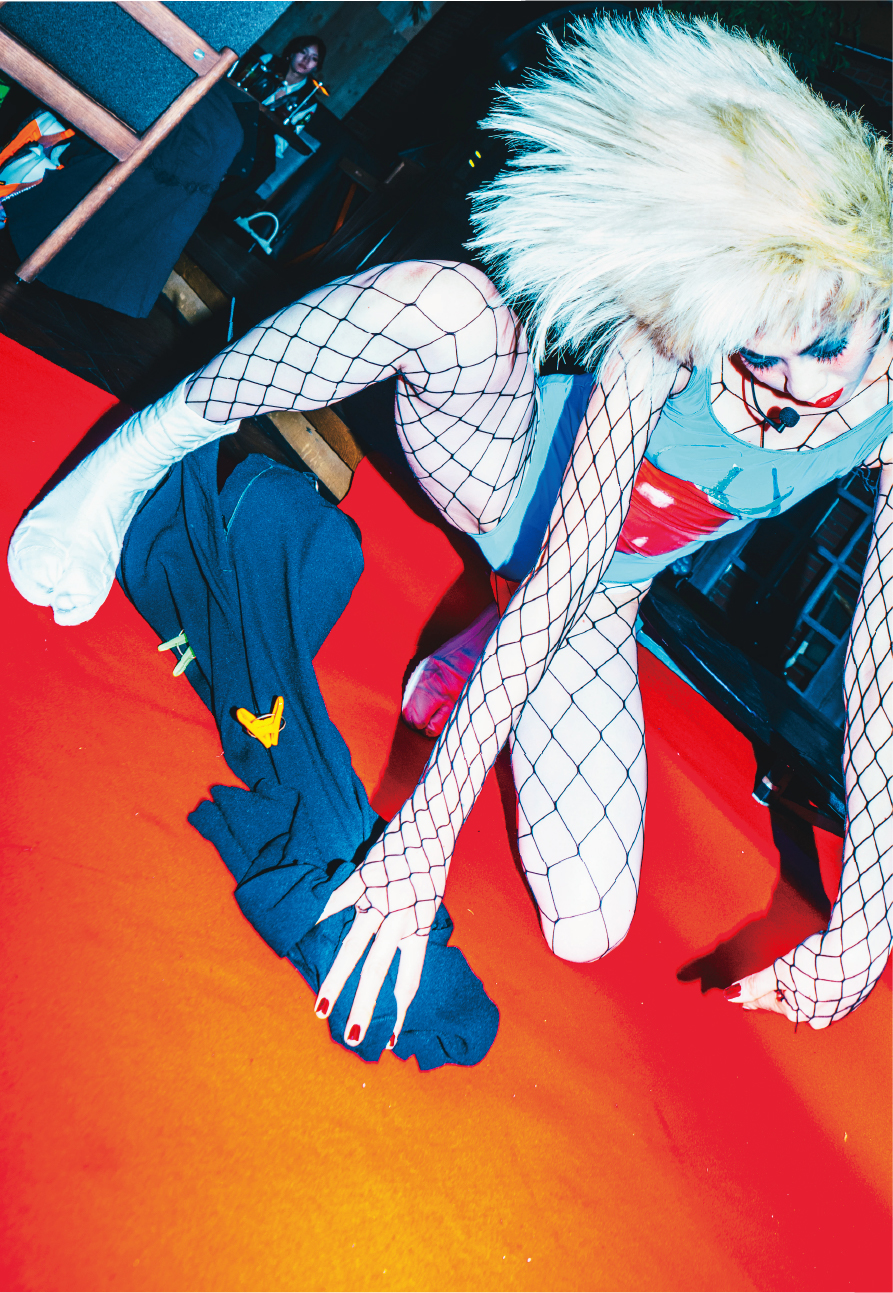
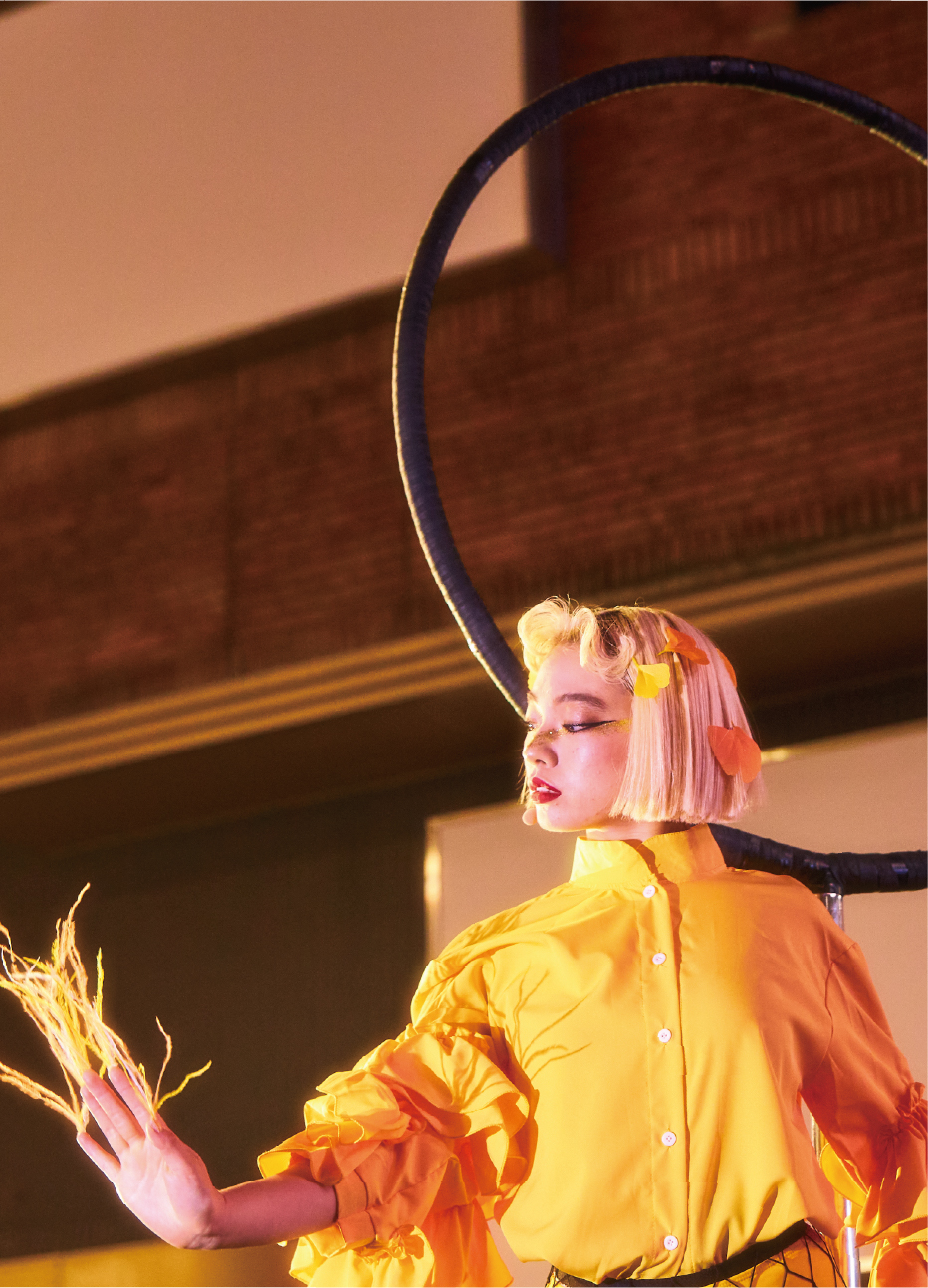
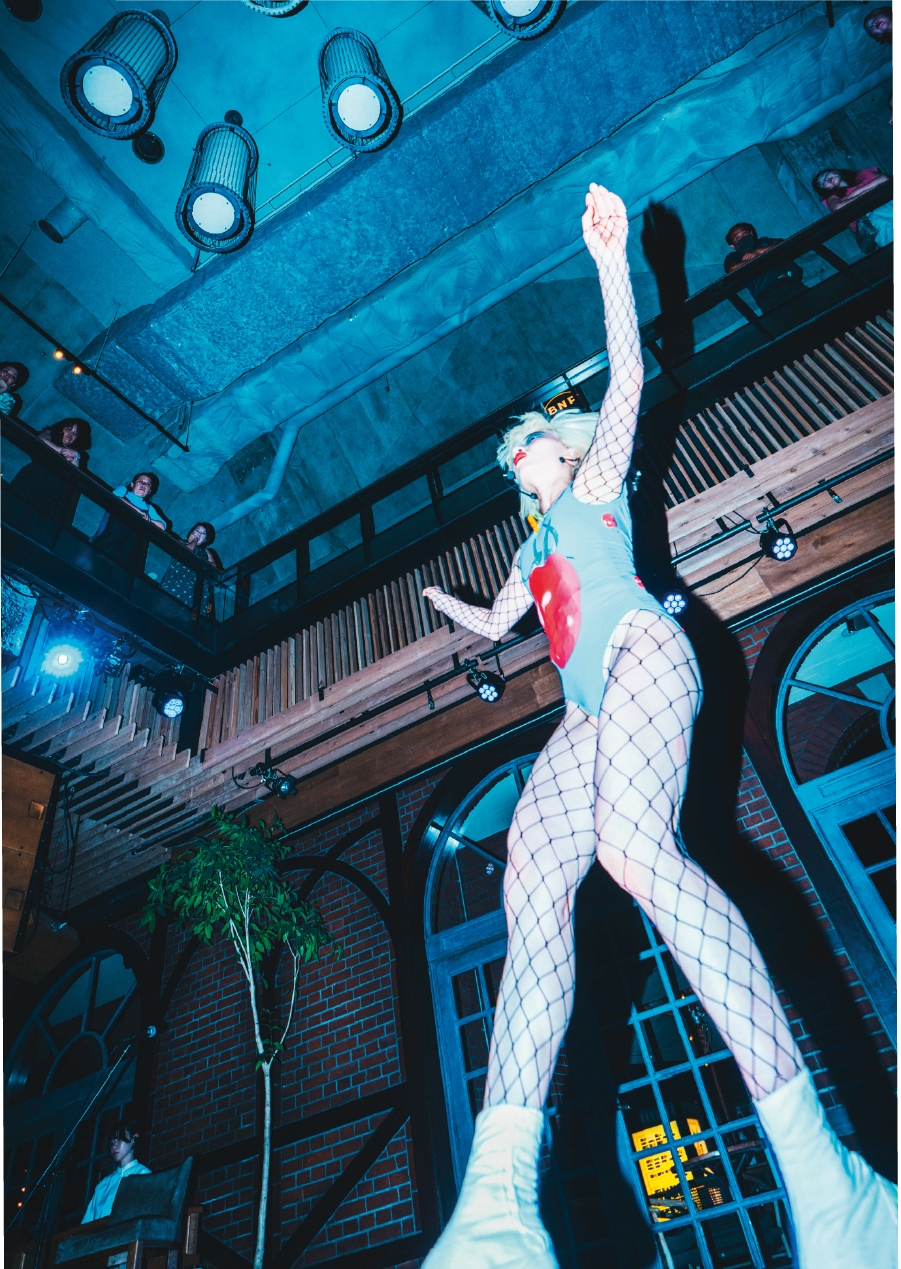
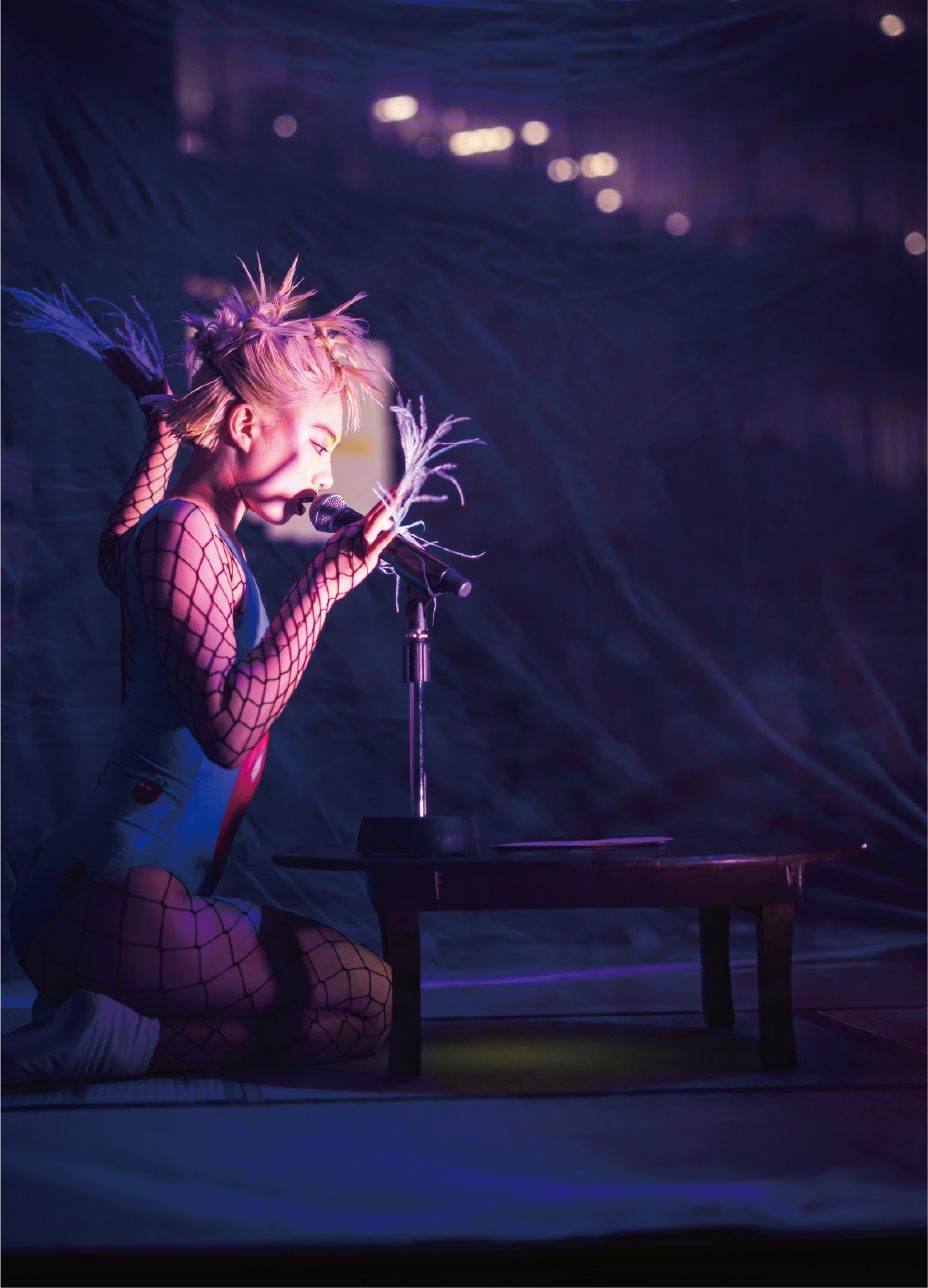
2025年11月8日(土)・11月9日(日) 10時〜17時
◎千葉県木更津市 クルックフィールズ
『EARTH BEAT FES』
2025年11月23日(日)・11月24日(月・祝)
◎長野県松本市 まつもと市民芸術館 小ホール
『ROOT:根』
アオイヤマダ × 小野龍一 × ひびのこづえ
2026年2月14日(土)〜3月1日(日)
◎KAAT神奈川芸術劇場
『未練の幽霊と怪物 ―「珊瑚」「円山町」―』






